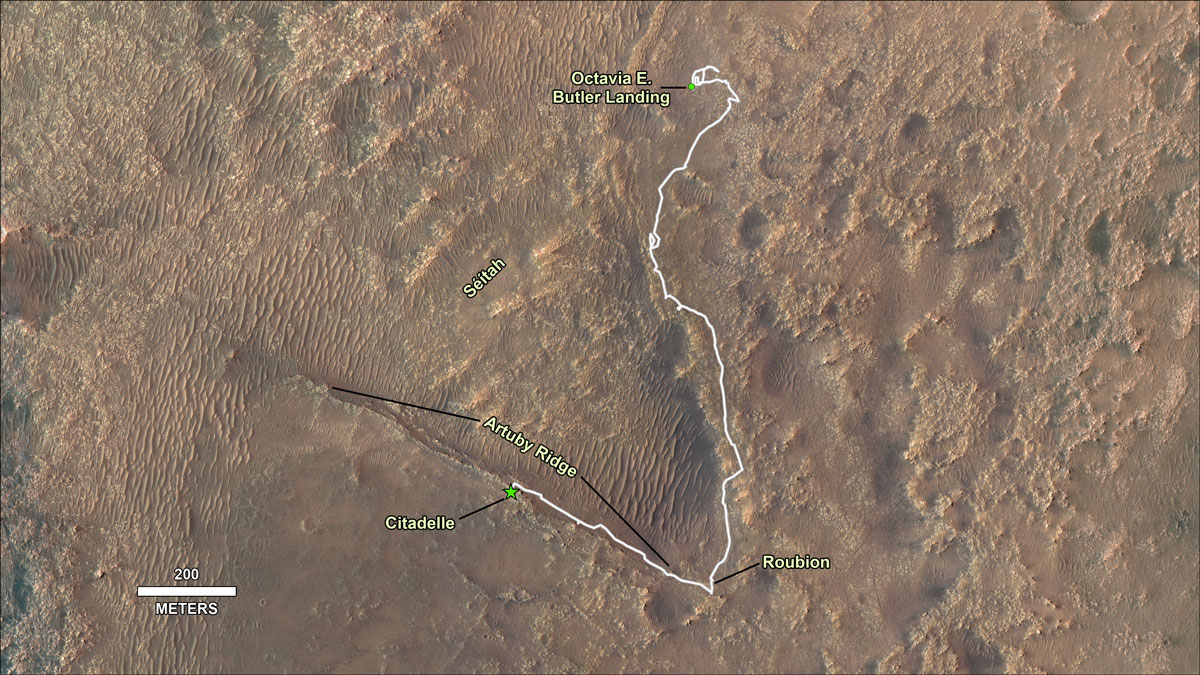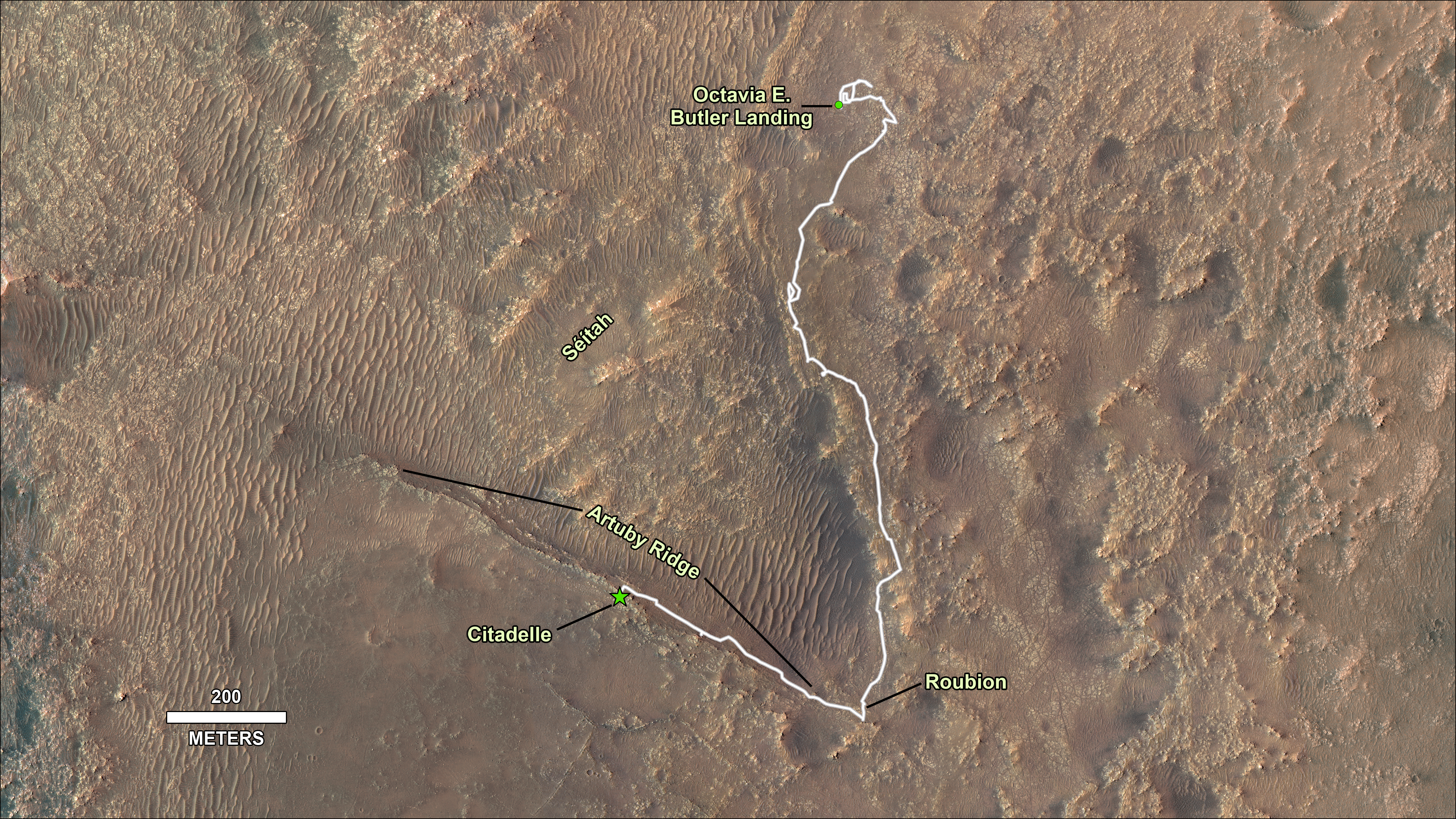Perseverance’s Journey to First Successful Sample Collection

| Credit | NASA/JPL-Caltech/University of Arizona/USGS |
|---|---|
| Language |
|
This image shows the journey of NASA's Perseverance rover across the floor of Mars' Jezero Crater in the approximately seven months since landing on Feb. 18, 2021. From the landing site "Octavia E. Butler Landing," the rover drove south and attempted to collect its first sample at a drill hole called "Roubion" in early August. After that rock proved too crumbly to provide a core sample, Perseverance drove northwest along "Artuby" ridge to an area known as "Citadelle," where it successfully collected its first two samples in early September 2021. The first core was taken from a block of rock called "Rochette," at the drill hole called "Montdenier." The second, or paired, sample of Montdenier was taken at the drill hole called "Montagnac.") "Séítah," a future area of rover exploration, is also shown.
This map is composed of images from the High Resolution Imaging Experiment (HiRISE) aboard NASA's Mars Reconnaissance Orbiter.
A key objective for Perseverance's mission on Mars is astrobiology, including the search for signs of ancient microbial life. The rover will characterize the planet's geology and past climate, pave the way for human exploration of the Red Planet, and be the first mission to collect and cache Martian rock and regolith.
The Mars 2020 Perseverance mission is part of NASA's Moon to Mars exploration approach, which includes Artemis missions to the Moon that will help prepare for human exploration of the Red Planet.
Subsequent missions by NASA in cooperation with ESA (European Space Agency) would send spacecraft to Mars to collect these cached samples from the surface and return them to Earth for in-depth analysis.
NASA’s Jet Propulsion Laboratory in Southern California built and manages operations of the Mars 2020 Perseverance rover for NASA.
For more information about the mission, go to: https://mars.nasa.gov/mars2020
The University of Arizona, in Tucson, operates HiRISE, which was built by Ball Aerospace & Technologies Corp., in Boulder, Colorado. NASA's Jet Propulsion Laboratory, a division of Caltech in Pasadena, California, manages the Mars Reconnaissance Orbiter Project for NASA's Science Mission Directorate, Washington.

